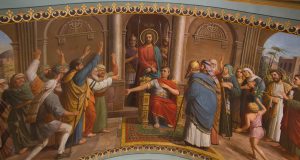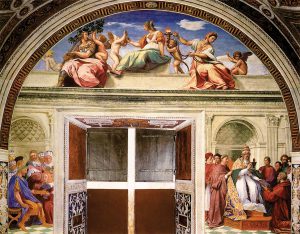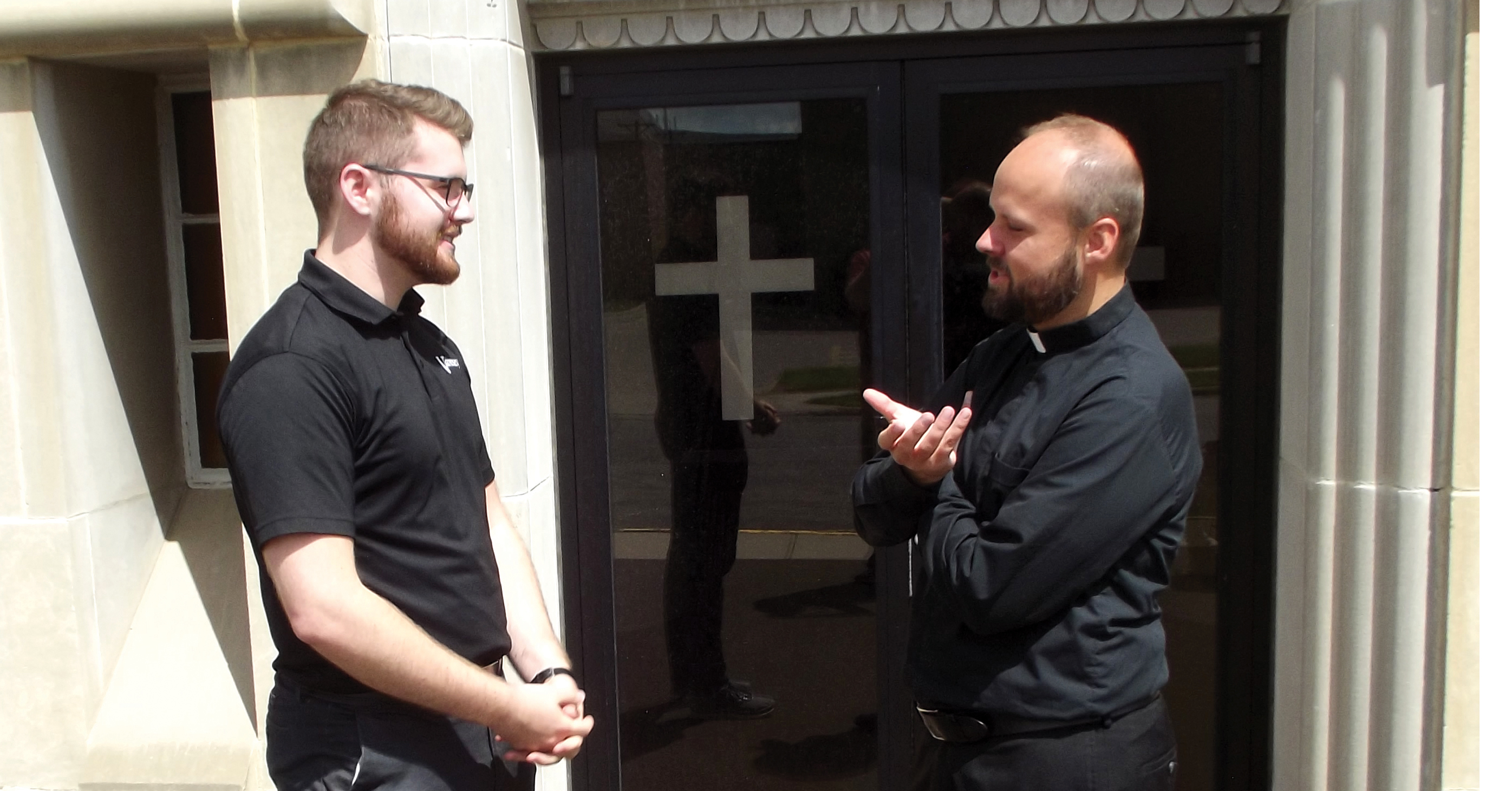
By Father Michael Griffin
In March 1992, Pope John Paul II presented to the Church the apostolic exhortation “Pastores Dabo Vobis (I Shall Give You Shepherds)” on the formation of priests. In this document, the mystery of vocations was presented as “an inexpressible dialogue between God and human beings, between the love of God who calls and the freedom of individuals who respond lovingly to him.” (PDV, 36)
This dialogue was present at the beginning when God entered into a relationship with human beings, continued through the call of prophets and apostles, and endures to this day as God calls the baptized to their vocation in life; God calls in love and we respond in love.
Since the beginning of the Church, God has called men to the vocation of holy orders and the priesthood, and they have responded to this call in love. Yet, throughout the history of the Church, struggles, scandals and challenges have had a profound impact on men discerning the call God has given them to serve the Church as a priest.
In the present day, the effects of the abuse crisis are still being felt in the Church, and still rest heavy on the hearts of the faithful. As the Church deals with these effects, and strives for repentance and healing, men are still being called by Christ to follow him in the priesthood.
Responding to the Call
Priests who have been ordained for two decades or more entered the seminary in a different culture, where the vocation to priesthood was highly regarded both in the Church and outside it. Today, those discerning a vocation to the priesthood face the added challenge of a loss of respect for the priesthood in the culture; and yet, they are still responding in faith.
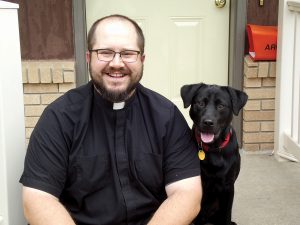
Father Grant Lacey, pastor of St. Peter the Apostle in Platte and St. Anne in Geddes, was ordained to the priesthood in 2015. In his senior year at the University of South Dakota, “after years of back and forth with an unease about discovering what I should be doing, and not just what I should be learning, I began to pray,” he said.
“I met with Father Scott Traynor and learned the discernment of spirits, and discovered what I should be doing.”
Father Lacey said even while he was discerning, the abuse crisis did not really play a part in his prayer or decision.
“I had zero church radar when I was in college, and the events really didn’t blow up until I had already entered the seminary.”
Things were different for Gerald Thornton, a seminarian for the diocese from Sioux Falls. His understanding of the priesthood was formed at an early age through his interaction with individual priests.
“I grew up in the Church, going to daily Mass and serving as soon as I could. I grew up around priests, and I got to know them, so it never occurred to me that a priest could be like that,” he said.
His discernment involved a bit more understanding of how the view of the priesthood has changed in the culture around him.
“I’m used to the jokes about the abuse crisis, but it’s a part of the culture now to think that way,” he said. “I grew up with the jokes about priests, but they were just jokes, so it didn’t really occur to me that people would think about me that way if I went into the seminary.”
Thornton attributes a great deal of this ability to see priesthood apart from the cultural perceptions of it to the Safe Environment policies established in the Charter for the Protection of Children and Young People by the United States Council of Catholic Bishops in June 2002.
In their recent revision of the Charter, the bishops of the United States wrote that, “Safe environment programs are in place to assist parents and children—and those who work with children—in preventing harm to young people. These programs continually seek to incorporate the most useful developments in the field of child protection.”
For 17 years, the Church has worked to integrate the protections of the Charter into the daily life of parishes and clergy. While this work is challenging and painful, and involves some new ways of thinking and ministering for older priests, the effects of it are positive for young men discerning God’s call.
Thornton said, “I grew up with the safe environment changes with priests, so, for me, that was just the ways things were—there was going to be some separation in youth events. I never really had a thought that this was somehow ‘added.’ As far as I knew, this was just how normal adults acted.”
Father Jordan Samson, vocations director for the diocese and pastor of Christ the King in Sioux Falls, sees the current climate and cultural view of priesthood as having a definite impact on the internal and spiritual dialogue between God and the one He is calling.
“Now, perhaps more than ever, it’s countercultural to listen to this call, and it takes courage,” he said.
Some of that courage is needed due to the changes in support a man discerning a vocation would traditionally have received. Father Samson said, “I think there are young men discerning now who may not have the same family support they may have had years ago.”
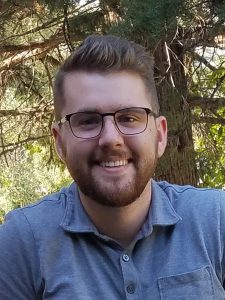
While Thornton has strong support from his family, he has felt concern from others.
“People have expressed concern with the Church, and they wonder how I can be doing what I’m doing with all the news about the crisis.”
This has challenged him to look at the Church in different ways.
“You start to see the Church is human, and it’s flawed, but even more, you see Christ in the people you are serving,” Thornton said.
Father Samson sees his vocations ministry, in a strong way, as helping young men who are listening for that call to discover the courage they need, and to embrace what is positive in discerning it for themselves.
“When you’re called, you can know the facts and figures about priesthood today, but it is still your call, and it would be sad to deny that,” Father Samson said.
He sees the call of Christ to the priesthood today as a challenge, but also a unique opportunity to live the Gospel.
“Being a priest is an amazing life, and in today’s particular culture, practicing the Gospel is more radical because of the contrast with our culture.”
Formation of a Priest
John Paul II wrote, “A vocation is a fathomless mystery involving the relationship established by God with human beings in their absolute uniqueness, a mystery perceived and heard as a call which awaits a response in the depths of one’s conscience…But this does not eliminate the communitarian, and in particular, the ecclesial dimension of vocation. The Church is also truly present and at work in the vocation of every priest.” (PDV, 38)
The Church uses seminaries to teach and form men for the priesthood.
While many of the academic and spiritual aspects of seminary formation remain the same, the manner of formation is ever evolving and changing with each generation. Today’s climate has also had an impact on how men are prepared for ordination.
Father Lacey felt the change in his seminary experience during his first year.
“I was in pre-theology when the events in Boston, the abuse, the scandal, began to be revealed,” he said. “It became part of the conversation, but it was always ‘out there.’ That happened ‘out there.’”
When he entered the Saint Paul Seminary School of Divinity in Saint Paul, Minnesota, “out there” moved closer to home. He said, “The lawsuits started in the Archdiocese of Saint Paul/Minneapolis, and then, the conversations were all the time.”
The emotional impact underlying these conversations was strongly felt by the seminarians on a personal level.
Father Lacey said, “There was frustration expressed because they had this aspiration to the priesthood, and then they saw these men who had betrayed everything they aspired to become. I had some anger on a human level to see these men fail so catastrophically.”
In response to this anger, Father Lacey spoke openly with his fellow seminarians, friends and those responsible for his formation.
He also took it to prayer.
“As the saying goes, ‘I took yesterday’s news into today’s holy hour.’ I found myself asking the Lord how this can happen in the priesthood and how He could be calling me into this priesthood,” Father Lacey said. “Every time I thought about it, or heard about it, I took it to prayer and asked, ‘Are you still calling me into this life?’”
He said the answer was always the same.
“The answer was always ‘yes.’ He told me God’s people still need good priests. There is still work to do, and the priesthood is bigger than the failings of its members; it’s a call from Christ.”
In order for men in priestly formation to more clearly hear this call from Christ, John Paul II wrote, “The…seminary should strive to become ‘a community built on deep friendship and charity so that it can be considered a true family living in joy.’” (PDV, 60)
This “deep friendship and charity” in today’s climate can be an invaluable gift for a young man responding to Christ’s call.
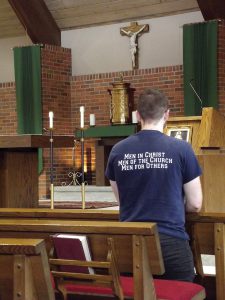 Thornton said, “We know (as seminarians) we can step out the door and be seen as terrible, so we find a great deal of support in the seminary community.”
Thornton said, “We know (as seminarians) we can step out the door and be seen as terrible, so we find a great deal of support in the seminary community.”
He sees the impact of this support in the individual men in formation.
“There are so many signs of hope, everyone is so committed to his formation and his spiritual life,” Thornton said. “We have always been encouraged to go to counseling, if needed, for depression or anxiety, and it’s not taboo at all. Everyone wants to work on his issues, emotionally and otherwise, to be humanly healthy and to bring their vices to the light.”
This includes a seminary formation that is thoroughly committed to the bishop’s mandates regarding Safe Environment training. Thornton said this training takes place right away.
“It can be a little discouraging, but then you realize all the practical steps taken are having an effect. It gives you an added awareness.”
Father Lacey said, “Everything in the seminary was magnified and seen under the lens of Safe Environment. It could be tiresome at times, because it was hammered in, which is good because everyone comes to understand what the expectations are and need to be.”
Today, however, even the safety of the seminary cannot be taken for granted. A year ago, credible allegations of abuse were made against Cardinal Theodore McCarrick, which included the abuse of adult seminarians.
Thornton said the reaction from the seminary in Saint Paul was swift. The archdiocesan lawyer and an ombudsman, who is not employed by the archdiocese, were sent to the seminary to give the seminarians a confidential place to report if they had been abused. The rector of the seminary sent a letter to the bishops of the seminarians detailing how they are being kept safe.
Thornton said, “Bishop Swain immediately sent the letter to the parents of seminarians. He said he is always willing to speak with them if they have any concerns. I know my parents were happy the bishop sent it to them, to show he does care about our safety as seminarians.”
In the day-to-day living within the seminary community, Thornton said, “I do feel safe. I know the seminary and I know the priests there, and I know how our response is to continue to pray and to work on our own formation. There are no gray areas in formation; it’s all out in the open.”
Father Samson sees all the aspects of formation within the seminary community as necessary for men “to just be human, to be a man who knows himself and his limits, who loves life, who laughs and cries and shares his heart with people.”
Rather than being a hindrance, the culture today is challenging seminarians in new ways.
“Today, the seminarians for our diocese seem even more excited because of the climate, even more eager to serve and to show the courage needed to be a priest,” Father Samson said.
Living the Call
After seminary formation, a man is presented for ordination and then, traditionally, is sent to a parish. There he can put what he has learned in seminary into practice, and to live his priesthood as a man with a healthy spirituality, a strong academic life, and an authentic humanity.
As John Paul II taught, “The formation of future priests…and lifelong assiduous care for their personal sanctification in the ministry and for the constant updating of their pastoral commitment is considered by the Church one of the most demanding and important tasks for the future of the evangelization of humanity.” (PDV, 2)
For Father Lacey, this means living his priesthood in a church that has embraced even greater openness and transparency in ministry.
“To be honest, it doesn’t come up very often, but if it comes up in the news I’ll address it, and preach on it, and people are pleased I approach the topic,” he said. “After Mass, some people will thank me or tell me they’ve been thinking about it or worrying about it.”
One of the positive aspects of the crisis is a renewed sense of the priesthood itself.
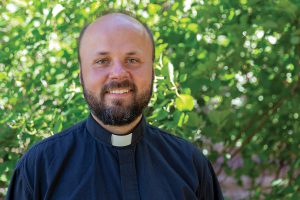
Father Samson said, “There is a tension in loving the office of the priest and honoring that, and the need to confront clericalism. There is a strong need today for men to be formed to be humble and unpretentious, to learn how to be with people in their lives with grace, and to just be human.”
For Father Samson, families are not only the source of vocations in the church but are also a source of inspiration in living that vocation.
“Priests come from families; they don’t fall out of thin air,” he said. “My five brothers, living healthy marriages, teach me how to be a priest and about the sacrifices needed. If I am ever tempted to think I’m better than my brothers because I’m a priest, I just watch them take care of their children.
“My family keeps me grounded; they love my priesthood, but I’m always going to be Jordan to them.”
Younger priests, formed in a time of crisis, are using the challenges of the past as an opportunity to embrace more fully their “personal sanctification and…pastoral commitment.” Father Samson said, “It drives me to live the life of Christ even more, and the simplicity of the Gospel. It calls me to remember why Christ is so important.”
Father Lacey realizes that young men discerning a vocation to the priesthood face unique challenges on their journey, as did he, but he would ask them, as a part of that discernment, to keep a positive perspective.
“There’s always been crisis in the Church, and in the world, but the message has always been the same,” Father Lacy said. “Jesus Christ is our consolation in crisis, and we need men to bring Him through the sacraments.”
With the opportunities for growth, opportunities for human as well as priestly formation, that are present in the Church today, a time of crisis becomes a time of courage, of compassion, of sacrifice and love. Father Samson said, “It’s a beautiful time to be a priest.”

